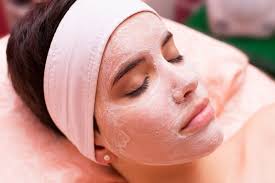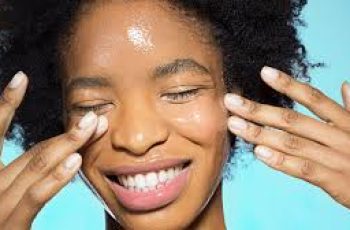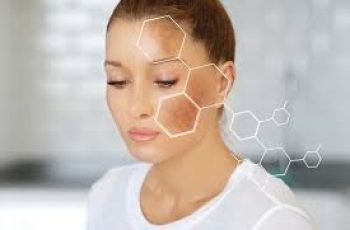
Skin Care Terms and Vocabulary
You found the best skin care blogs to learn about skin care and a dictionary of skin care terms. We are the top skin care website that has information written by a dermatologist to educate you about skin care science. Whether you are a beginner at skin care, wanting to become an aesthetician, or just want to learn more about how to take care of your skin, you can find the definitions of terms used in skin care here. Look up any terms you need to know about skin care, and click on them to learn more.
You can also search for topics about skin care products and skin conditions in our skin care information library.
To learn about specific skin care ingredients, search in our skin care ingredient library.
You can also learn about skin care by following us on social media @skintypesolutions and watching our educational skin care videos on YouTube.
I’m a dermatologist who is a passionate about skin care. I have written many skin care books including 2 dermatology textbooks. I wrote (and continue writing to keep it current) this skin care library based on information from my bestselling skin care books. (The Skin Type Solution was a NY Times Bestselling Skin Care Book). So if you need to learn the meaning and definitions of words used in skin care- this is the best place to get an education on skin care for beginners.
Where To Learn Skin Care For Beginners
Read through this dictionary of terms to familiarize yourself with skin care terms and skin science words. Then Get started learning in our Skincare 101 blog.
We are so excited that you are ready to learn about skin care with us!
Skin Anatomy:
There are 2 main layers of the skin: The epidermis and the dermis. For details on the skin layers, click here.
Moisturizers affect the epidermis.
To have long lasting results, antiaging skin care ingredients need to be able to penetrate through the epidermis to the dermis.
Basic skin anatomy
Epidermis
The epidermis is the outermost layer of skin. It contains cells called keratinocytes because they make the protein keratin. It is made up of four or five sublayers (depending on the location on the body): the basal layer, spiny layer, granular layer, stratum lucidum, and stratum corneum. Each layer has a different function.
The main role of the epidermis is protection and helping skin stay hydrated.
Dermis
The dermis is the inner most layer of skin, located below the epidermis. It contains specialized skin cells called fibroblasts. This is where important skin components such as collagen, elastin, hyaluronic acid, and heparan sulfate are made. Only a select few topical ingredients are able to reach this layer of skin.
This dermis the skin layer that makes skin look young or old. Wrinkles are caused in the dermis.
Skin Terms for Skin Hydration Anatomy
What is the skin barrier?
Skin Barrier
The skin barrier is located in the stratum corneum, which is the uppermost layer of the epidermis. It is comprised of a lipid bilayer, which retains moisture and prevents allergens and irritants from entering the skin. When the skin barrier is damaged, the skin becomes dry, dehydrated, and susceptible to irritation and inflammation.
Stratum Corneum
The stratum corneum (SC) is the uppermost layer of the epidermis. It used to be called the dead layer of skin cells but we now know it has an important protective role against dehydration and damage from sun, and things that cause skin irritation and skin allergy.
This is where the skin barrier is located. There are 15 to 40 layers of keratinocyte skin cells in the stratum corneum, each arranged like a brick wall. The “mortar” between the skin cell “bricks” is the lipid bilayer (2 rows of fats) that makes up the skin barrier.
This is also the layer that you exfoliate away with facial scrubs and peels.
Kinds of skin cells
Skin Cells
What are skin cells called?
The skin is made up of many types of cells. Keratinocytes are in the epidermis, while fibroblasts are in the dermis. Melanocytes and immune cells move around in the epidermis and dermis.
Melanocyte
Melanocytes are specialized skin cells that produce melanin, the pigment that gives your skin its color. All humans have the same number of melanocytes, but the amount of melanin that these cells produce can vary from person to person which gives us a variety of skin tones. Melanocytes are located in both the epidermis and the dermis. When the melanocytes make too much color, this is called hyperpigmentation. They are stimulated to make color by light, heat, inflammation, hormones, stress, and certain medications.
Keratinocyte
Keratinocytes are the skin cells that make up almost all of the cells located in the epidermis. These cells are created in the basal layer and work their way upward to the epidermis, pushing old skin cells up and out of the way. In the epidermis, the old cells flake off and are replaced by the new keratinocytes. Keratinocytes product the structural protein keratin.
Keratin- the main protein in the epidermis
A structural protein made in the epidermal keratinocytes. Found in the epidermis, hair and nails. This is the substance that clogs pores and causes comedones (Black heads and white heads). The cells in the epidermis make keratin- this is why they are called keratinocytes and the process of cells maturing in the epidermis is called keratinization because each layer of cells in the epidermis makes different kinds of keratin.
Fibroblast
Fibroblasts are specialized cells located in the dermis layer of skin. They are responsible for producing collagen, hyaluronic acid, and elastin. They can move around in the dermis and play an important role in skin thickness, skin aging and wound healing.
hydrophobic vs hydrophilic
Skin Care Product Terms and Vocabulary
Lipophilic-
Stands for “fat loving”. Molecules that are not polar prefer to surround themselves with lipids and repel water. Lipophilic ingredients such as Vitamin E enter the cell membranes and work in these lipid environments while they avoid water environments. It is easier to get lipophilic ingredients into the skin. They are found in moisturizers and oils.
Hydrophilic
Stands for “water loving”. Polar molecules bind water. The interior of the skin cell has water, so hydrophilic ingredients like Vitamin C work inside the cells. Hydrophilic ingredients are found in toners and serums.
categories of skin care ingredients
Ingredient Categories:
Antioxidants
Antioxidants are molecules that donate an electron in order to neutralize harmful free radicals. Antioxidant polyphenols are naturally found in many plants, including berries, green tea, and ginger. Antioxidants in skincare can prevent inflammation, protect skin from pollution, and reduce signs of skin aging.
Anti-inflammatories
Anti-inflammatory ingredients can deactivate one or more of the many inflammatory pathways that lead to inflammation.
Inflammation always has dilated blood vessels (capillaries) which causes skin redness. In some cases of inflammation, the capillaries become leaky and leak water into the surrounding skin causing swelling, This may lead to hives, itching and rashes depending on which inflammatory pathways are turned on.
Skin Lighteners
Skin lighteners are a group of skincare ingredients that even skin tone and lighten skin. They may be called skin brighteners.
They work by one or more of the following ways:
block production of melanin
block transfer of melanosomes from the melanocyte to the keratinocyte
or increase exfoliation
Tyrosinase inhibitors
Tyrosinase is the enzyme necessary to produce the pigment melanin. Tyrosinase inhibitors block this enzyme and prevent the production of melanin. There are many different tyrosinase inhibitors used to treat skin pigmentation problems, such as hydroquinone, resorcinol, vitamin C, arbutin and kojic acid.
PAR-2 blockers
Proteinase-activated receptor 2 (PAR-2) is located in the connection between keratinocytes and melanocytes. It functions as a doorway to allow melanin laden melasomes to enter into the keratinocyte after being produced by melanocytes. PAR-2 blockers prevent melanin from entering keratinocytes. Examples include niacinamide and proteins found in soy.
Exfoliants
The skin’s natural exfoliation process is called desquamation. When natural desquamation is not enough, exfoliants can be used to increase exfoliation. There are two types of exfoliants: chemical and mechanical. Chemical exfoliants use a low pH or enzymes to dissolve and loosen proteins attachments between skin cells. Mechanical exfoliants use friction to rub dead skin cells off of the surface of the skin.
Skin Care Routines
The best way to design a skin care routine is by the Baumann Skin Type. There are 16 Baumann Skin Types based on 4 main skin concerns that need to be considered when building a skin care routine.
The step order of the skin care routine matters.
To learn the basics of skin care routines click here.
To find out your Baumann Skin Type- take the quiz and start learning about your skin’s issues.
Take the Quiz
the right start for your skin care journey
The Right Start For Your Skin Care
Now that you have some basic skin care terminology, browse our skin care library and enjoy going down different rabbit holes of learning. I suggest learning first about your skin type and go from there. Once you take the quiz watch for educational emails that will tell you all about your skin type, what types of products to use, and how to know if they are working.


